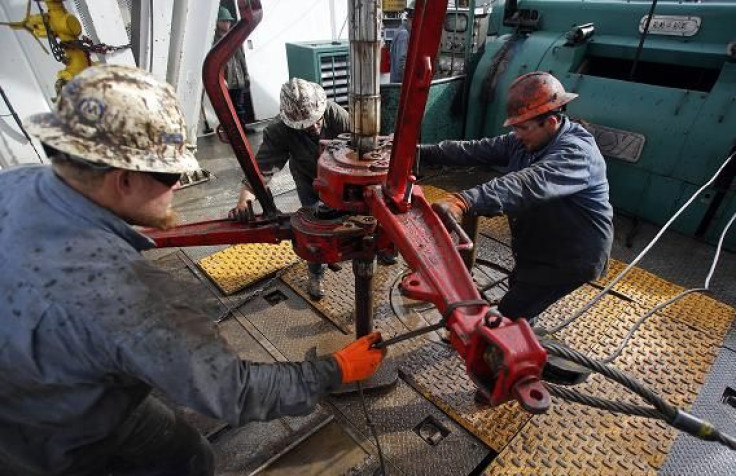US Surpasses Russia To Become Largest Oil, Natural Gas Producer, Energy-Dependent Countries Like India Are Taking Note

The U.S. is overtaking Russia as the world’s largest crude oil and natural gas producer due to the extraction of unconventional sources of hydrocarbons, the Wall Street Journal reported Wednesday.
Oil and gas output in the U.S. in July was equivalent to about 22 million barrels per day, compared with Russia’s forecast of an average 21.8 million barrels per day in 2013.
The rapid increase in U.S. crude oil and natural gas output can be attributed to the extraction of the commodities from shale formations. These resources have contributed to the U.S. producing 14 percent more of its own energy now vs. 2005, according to data from the Energy Information Agency.
Thanks to hydraulic fracturing, or fracking, and the ability to drill horizontally, oil and gas production in the U.S. has skyrocketed. Fracking is a drilling technique that blasts millions of gallons of water and chemicals to fracture rock formations deep beneath the surface and release petroleum. The drilling technique has been heavily criticized, and some environmentalists contend that fracking contaminates groundwater.
U.S. imports of natural gas and crude oil in the past five years have fallen 32 percent and 15 percent, respectively, and the U.S. may soon be in a position to start exporting its energy resources.
In fact, many countries that rely heavily on energy-related imports are eyeing the U.S. as a source for diversifying their energy mix and helping to lower costs.
India, for example, is limited in developing its own shale gas and looks to the U.S. as a possible supplier.
India became the world's sixth-largest importer of liquefied natural gas (LNG) in 2011 and is the fourth-largest energy consumer in the world after the United States, China and Russia, according to the U.S. Energy Information Administration.
“As India's energy needs continue to rise and the U.S. looks to expand the marketplace for its vast cache of energy resources, our partnership stands to be strengthened even further,” Nirupama Rao, Indian ambassador to the U.S., wrote in an op-ed piece in the Wall Street Journal in April.
“A boost in LNG exports would have many positive effects on both the U.S. and Indian economies,” Ambassador Rao said. “For the U.S. it would help create thousands of jobs … For India, it would provide a steady, reliable supply of clean energy … reliable energy to a greater share of our population.”
U.S. Department of Energy is currently reviewing at least two-dozen projects involving the building of LNG export terminals.
The DOE, with the support of President Barack Obama, has approved conditional export licenses to three Gulf Coast terminals; one terminal in southwest Louisiana gained approval in 2011.
The most recent export terminal to be approved belongs to Virginia-based Dominion Resources Inc. (NYSE:D). It is the Cove Point terminal on the Maryland shore of Chesapeake Bay. To date, the DOE has authorized 6.37 billion cubic feet of LNG from the plant to be sold overseas.
© Copyright IBTimes 2024. All rights reserved.












